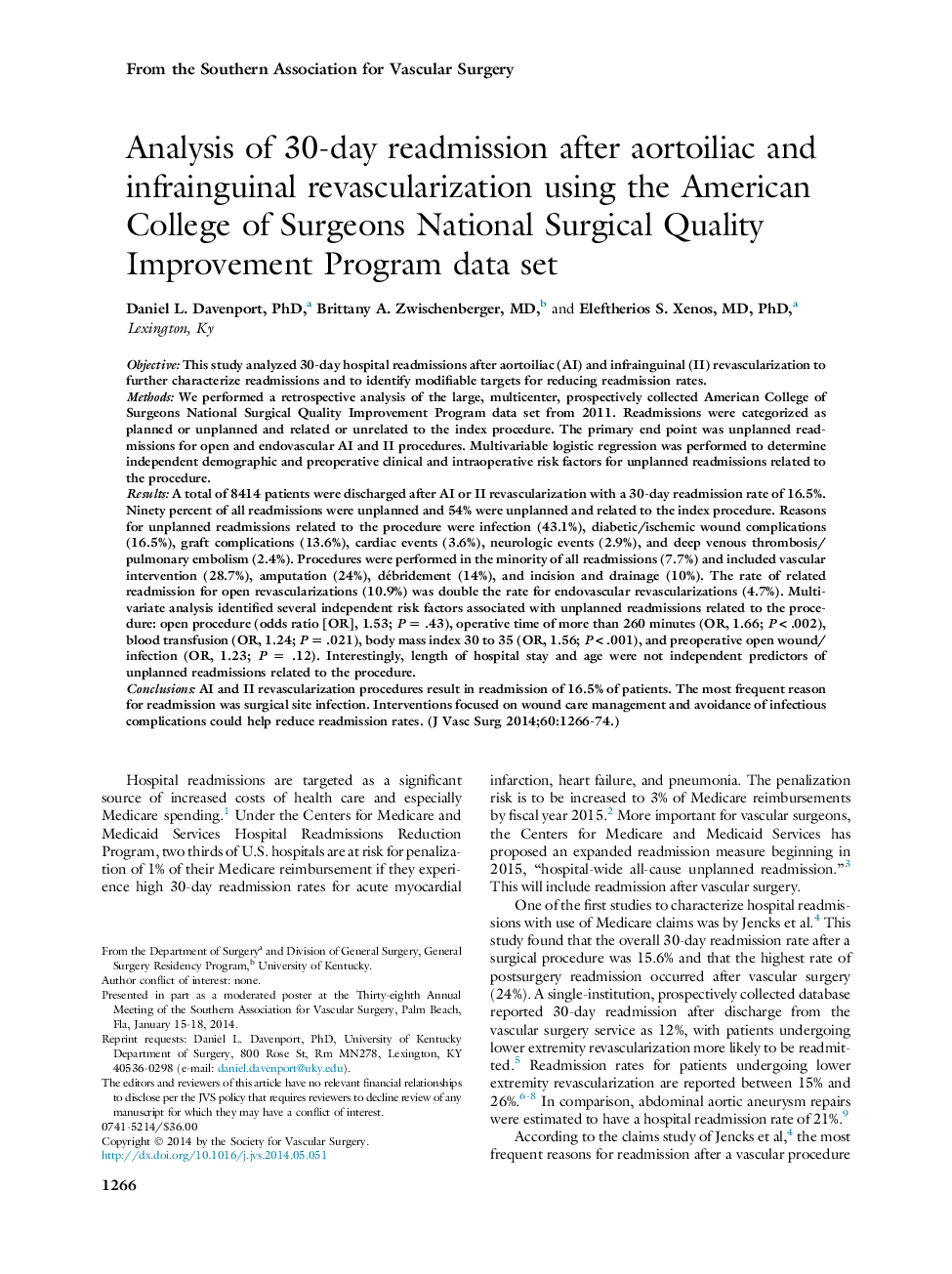| کد مقاله | کد نشریه | سال انتشار | مقاله انگلیسی | نسخه تمام متن |
|---|---|---|---|---|
| 5994096 | 1179827 | 2014 | 9 صفحه PDF | دانلود رایگان |
ObjectiveThis study analyzed 30-day hospital readmissions after aortoiliac (AI) and infrainguinal (II) revascularization to further characterize readmissions and to identify modifiable targets for reducing readmission rates.MethodsWe performed a retrospective analysis of the large, multicenter, prospectively collected American College of Surgeons National Surgical Quality Improvement Program data set from 2011. Readmissions were categorized as planned or unplanned and related or unrelated to the index procedure. The primary end point was unplanned readmissions for open and endovascular AI and II procedures. Multivariable logistic regression was performed to determine independent demographic and preoperative clinical and intraoperative risk factors for unplanned readmissions related to the procedure.ResultsA total of 8414 patients were discharged after AI or II revascularization with a 30-day readmission rate of 16.5%. Ninety percent of all readmissions were unplanned and 54% were unplanned and related to the index procedure. Reasons for unplanned readmissions related to the procedure were infection (43.1%), diabetic/ischemic wound complications (16.5%), graft complications (13.6%), cardiac events (3.6%), neurologic events (2.9%), and deep venous thrombosis/pulmonary embolism (2.4%). Procedures were performed in the minority of all readmissions (7.7%) and included vascular intervention (28.7%), amputation (24%), débridement (14%), and incision and drainage (10%). The rate of related readmission for open revascularizations (10.9%) was double the rate for endovascular revascularizations (4.7%). Multivariate analysis identified several independent risk factors associated with unplanned readmissions related to the procedure: open procedure (odds ratio [OR], 1.53; PÂ = .43), operative time of more than 260Â minutes (OR, 1.66; PÂ < .002), blood transfusion (OR, 1.24; PÂ = .021), body mass index 30 to 35 (OR, 1.56; PÂ < .001), and preoperative open wound/infection (OR, 1.23; PÂ = .12). Interestingly, length of hospital stay and age were not independent predictors of unplanned readmissions related to the procedure.ConclusionsAI and II revascularization procedures result in readmission of 16.5% of patients. The most frequent reason for readmission was surgical site infection. Interventions focused on wound care management and avoidance of infectious complications could help reduce readmission rates.
Journal: Journal of Vascular Surgery - Volume 60, Issue 5, November 2014, Pages 1266-1274
